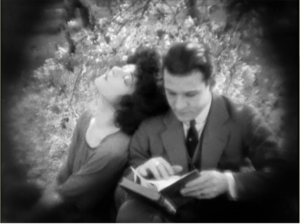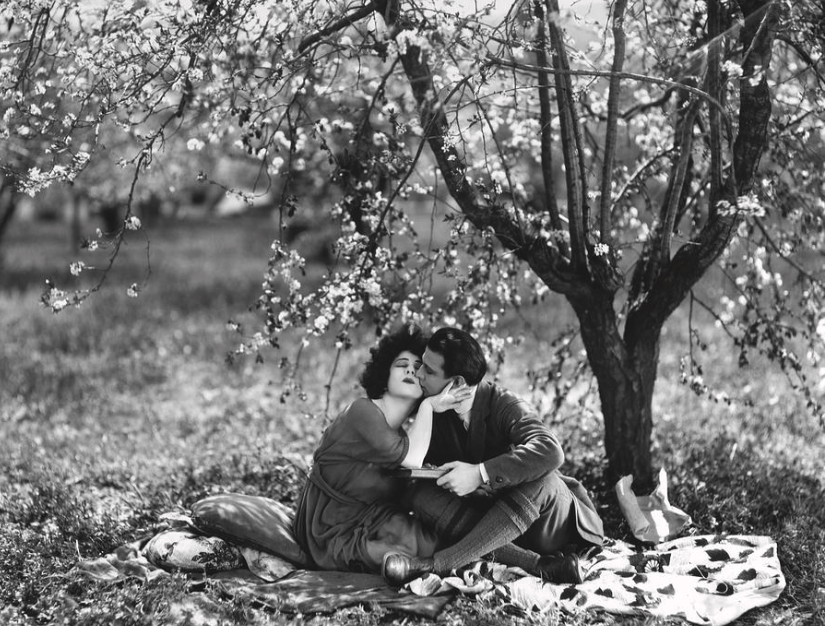Smallwood’s picnic episode is not in Dumas, fils’s La Dame aux Camélias. According to Smallwood’s cinematic logic, however, romantic scenes in a natural setting are sure audience winners. The screen legend tells the obvious, “Love is the greatest doctor.” So when Marguerite, the Lady of the Camelias, is recovering from tuberculosis, she meets her lover Armand in an orchard under blooming apple trees
For entertainment, Armand brings along Manon Lescaut, a tragic romantic novel about an unhappy love affair in which Manon, a courtesan (like Marguerite), dies. Overcome by sadness because the story is too close to reality, Marguerite asks Armand to stop. “I could never chain you to my past, Armand,” the screen legend tells us, “and drag you down—never!”Not to be deterred,
The picnic is a tender and indelible moment, and in Marguerite’s dying moments, she remembers it and says, “Let me sleep—let me dream—I am happy,” and dies.
There is no food or drink at the lover’s picnic.
Featured Image: Alla Nazimova as Marguerite and Rudolph Valentino as Armand
There is a picnic in Fred Niblo’s Camille; A Modern Version (1927), but not in George Cukor’s Camillle (1936) https://ok.ru/video/292423010979, or Desmond Davis’ adaptation(1984)
See Roy C. Smallwood. Camille: A Modernized Version (1921). Screenplay by June Mathis based on Alexander Dumas, fils’ novel and play; Alexandre Dumas, fils. La Dame aux Camélias (1848) and the dramatization in 1852; J. Gordon Edwards. La Dame aux Camelias (1917). Screenplay by Adrian Johnson. There is a picnic in Fred Niblo’s Camille; A Modern Version (1927), but not in George Cukor’s Camillle (1936) https://ok.ru/video/292423010979, or Desmond Davis’ (1984); Antoine François Prévost Manon Lescaut (1731), Dumas’s source, does not have a picnic; Desmond Davis. Camille (1984); https://ok.ru/video/89992071704 has no picnic

